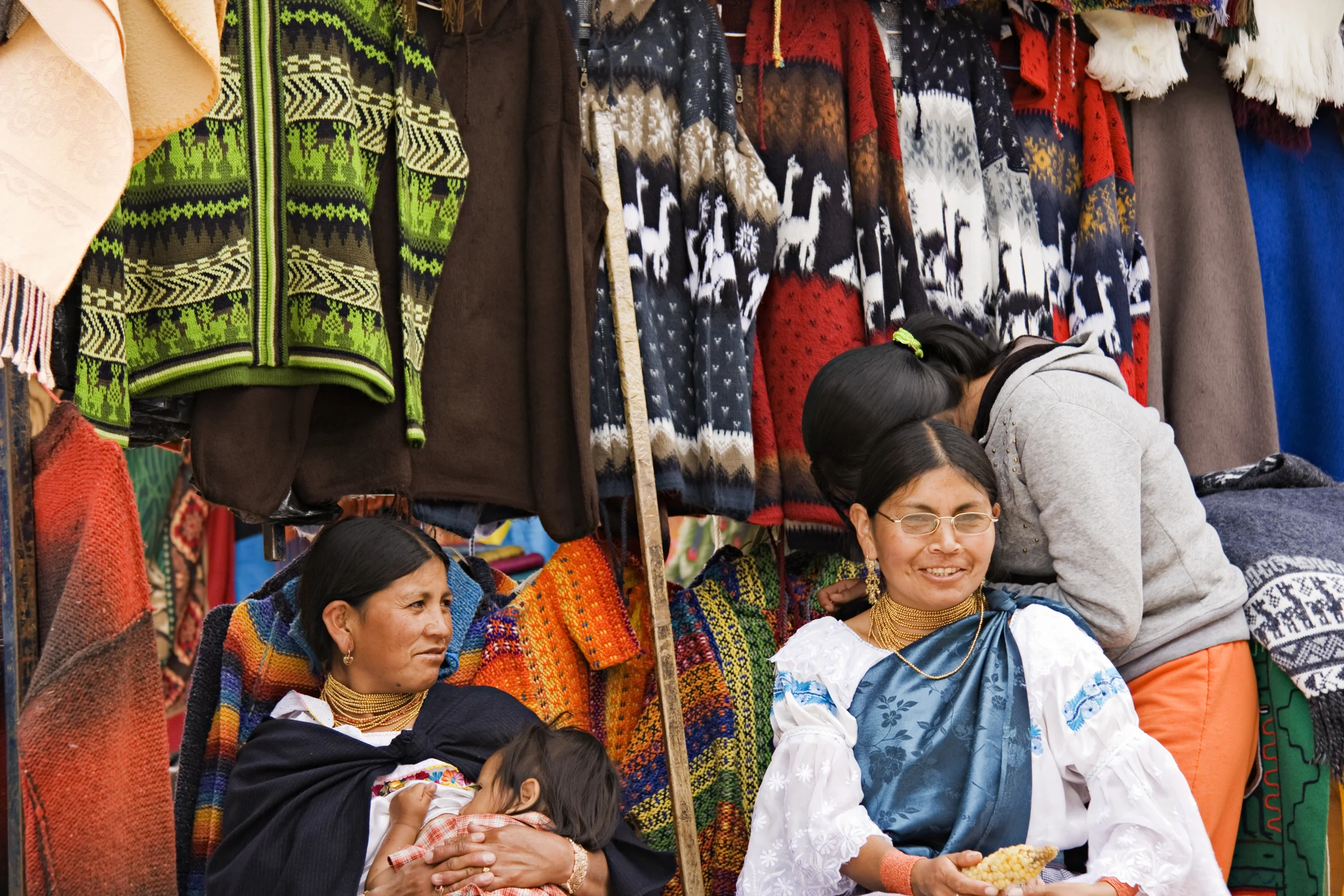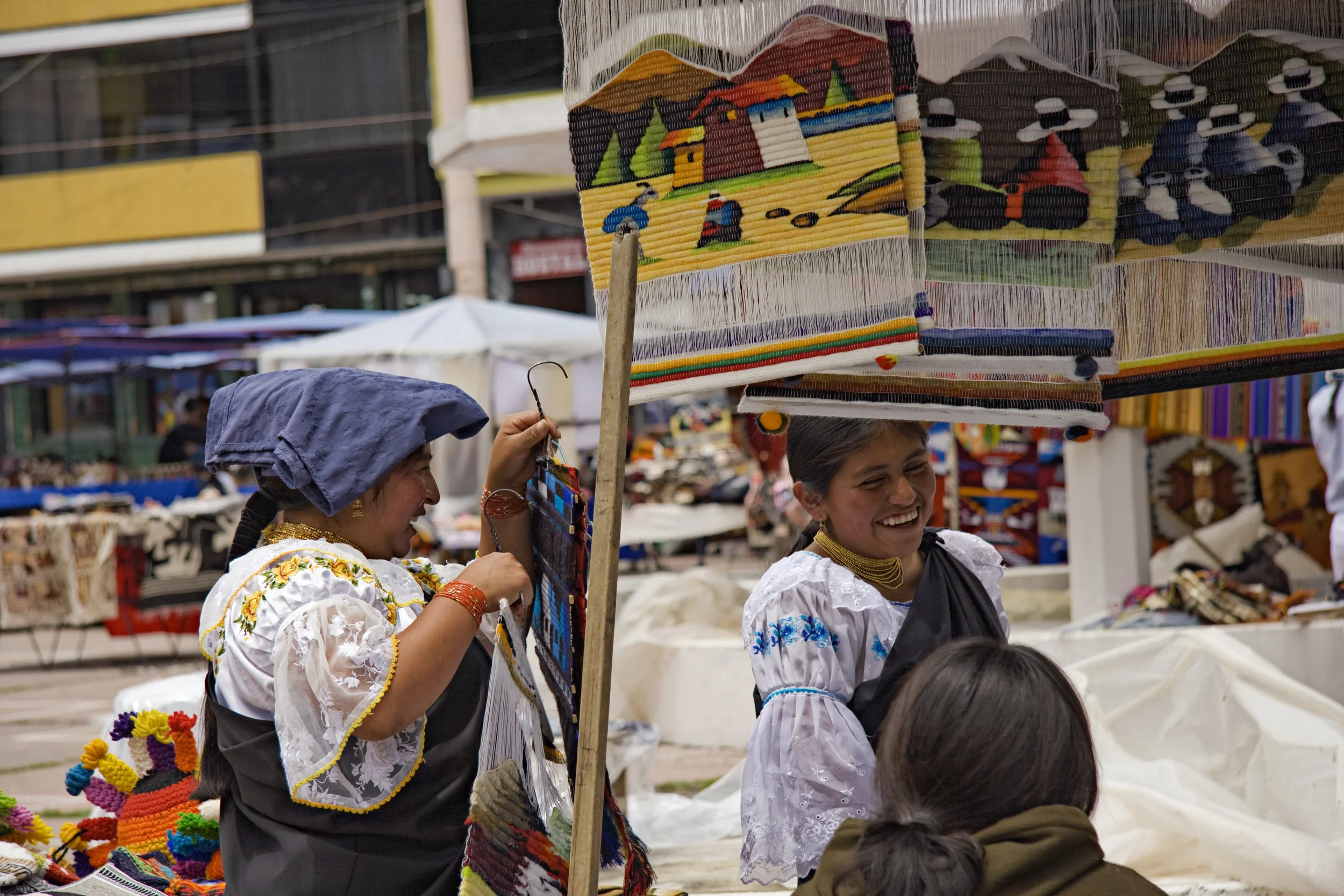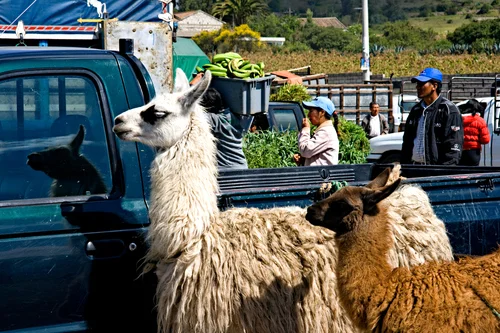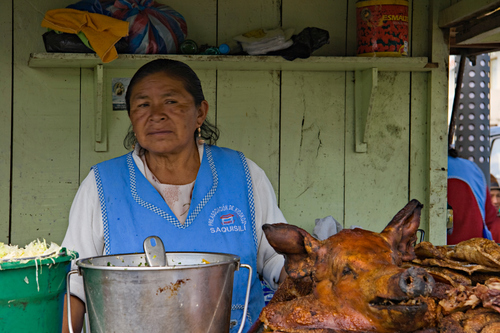My wife, Lisa, and I have been touring in Ecuador. We've been hearing about a cool market that some say is one of the most important and spectacular in all of Latin America. That's enough for me. This place deserves a visit.
We're up in the Andes, which is pretty exciting with its gorgeous vistas. As we approach Otavalo, it is pointed out to us that volcanoes surround this quaint Andean town. Today is Saturday, the best day to hit the market for both gringos like us, as well as locals. On the agenda is the animal market followed by the artesania (handicraft) exchange.
This is an expansive area with Imbabura, a large volcano, located in the the town of La Esperanza, quite noticeable in the background. The volcano is 4,609 meters high and can be climbed in a single day. The market itself is located in Otavalo Canton, an indigenous town of about 90,000 inhabitants. The volcanoes of Cotacachi and Mojanda also surround this area.
Imbabura Volcano, courtesy of Wikipedia
The first thing we notice as we enter the market is the colorful fabrics on display. The Otavalenos are famous for weaving textiles made of wool. We see blankets and tablecloths that are imbued with beautiful colors, many with stark black wool.
As we cruise down Poncho Plaza, the epicenter of the textile and handicraft market, the sounds of Andean pipe music adds to the festive atmosphere. The locals are chattering in their native language, Quichua, a derivation of the Inca dialect. We see an enormous variety of wares ranging from armadillo shell guitars to ceramic fried eggs.
We continue with our excursion along the Avenida Colon, cross the bridge, and ascend to the top of Avenida Segundo J Castro. We're now in the Otavalo Animal Market. It's not just the visuals I am getting from the locals unloading their wares and bargaining with each other for the best price. There is an auditory as well as olfactory sensation that is immediately obvious with pigs squealing and chickens clucking!
Otavalo Market, Llamas
We've been warned that the animal market is not for the faint of heart. We see a pig's head on display which is apparently a delicacy for Ecuadorians. I find that photographing them is more appealing than eating them.
There is one thing that really strikes me as our experience in the Otavalo Market comes to a close. Unlike many of the markets that I've seen in the third world, I'm told that the Otavalenos have become the most prosperous indigenous group in Latin America. They export their woolen sweaters world wide. Despite this, these people have maintained their centuries-old traditions, exemplified by their distinctive dress. We see women with embroidered blouses and beaded necklaces. The men have long, braided hair and wear ponchos. I suspect that the traditions of the Otavalo Market will persist for many years to come.






